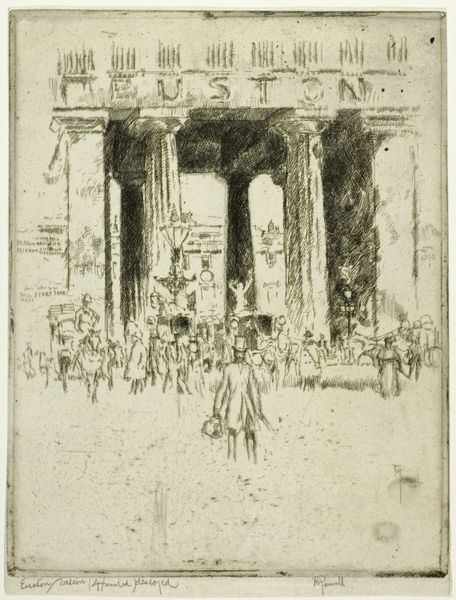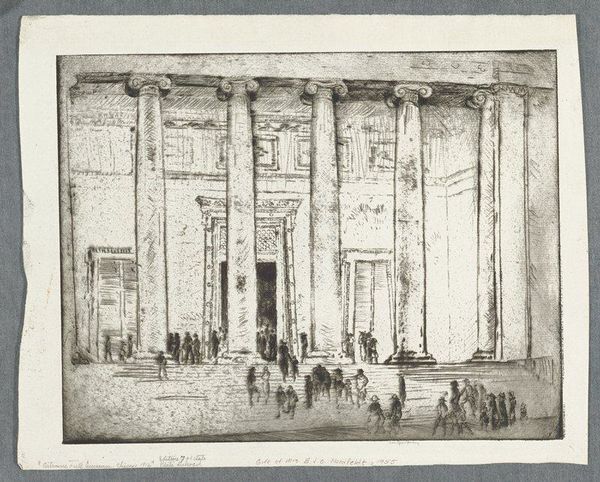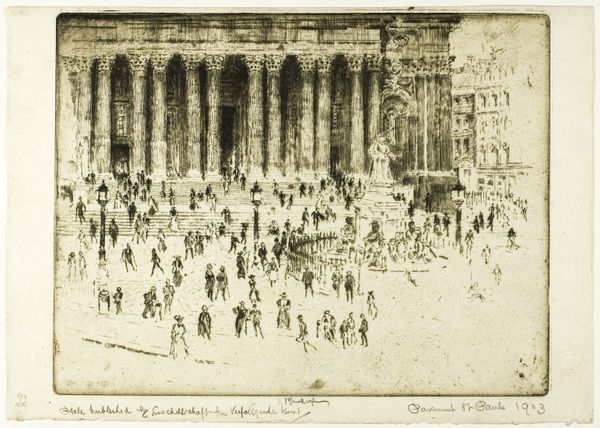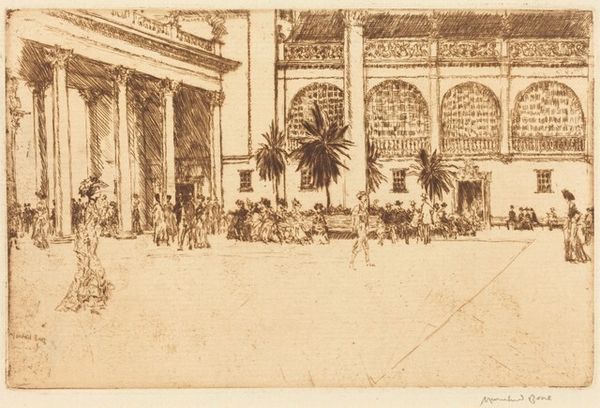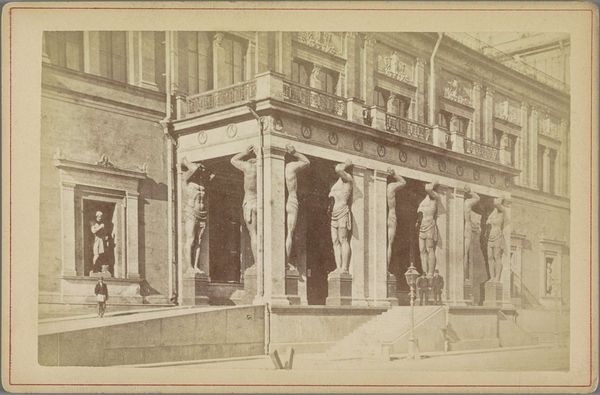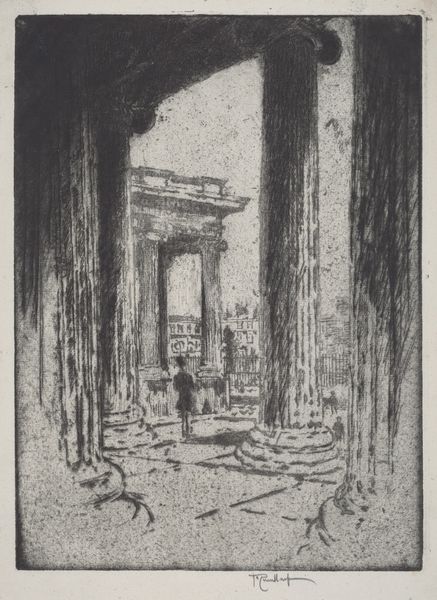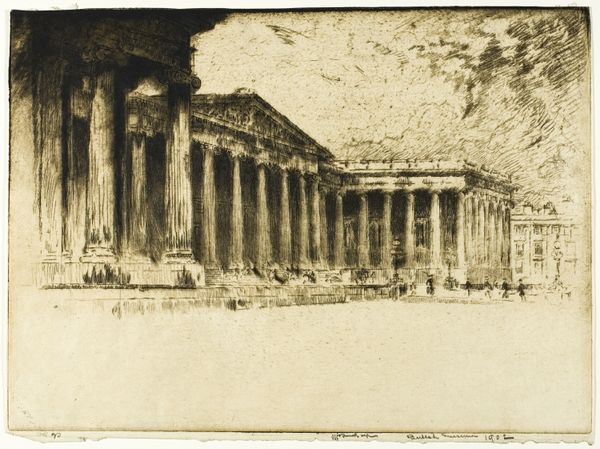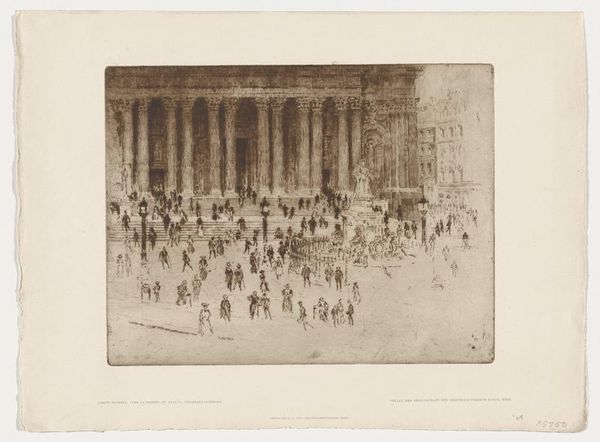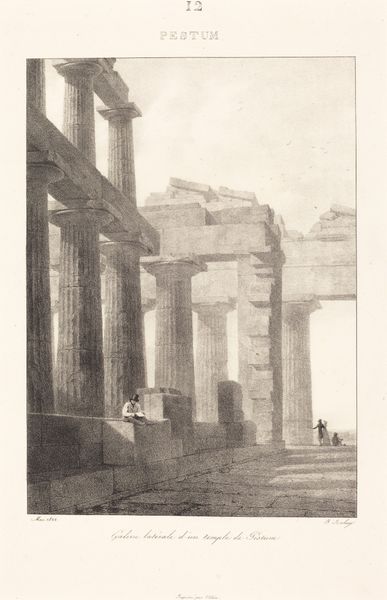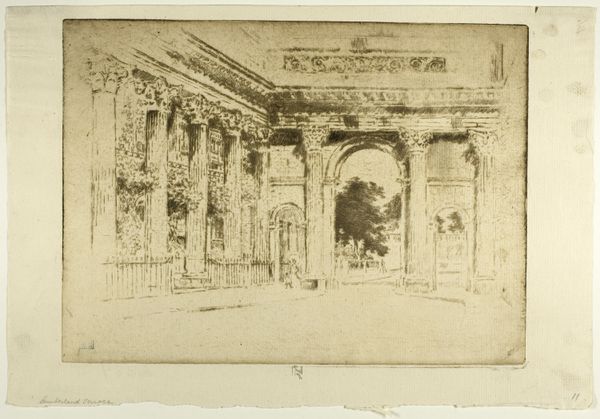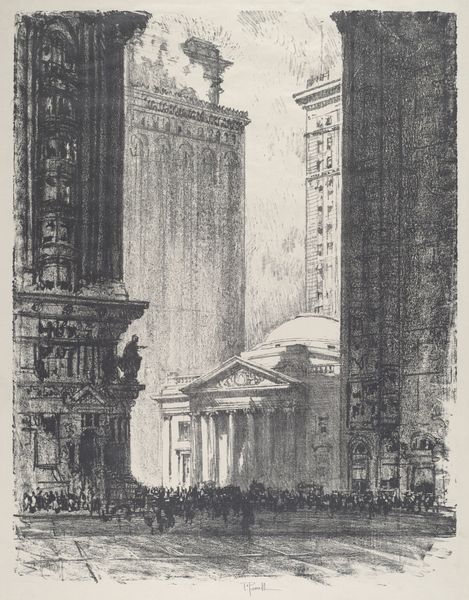
drawing, print, etching, paper
#
drawing
# print
#
etching
#
landscape
#
paper
#
cityscape
Copyright: Public Domain
Editor: Here we have Joseph Pennell’s 1904 etching, "The Steps, British Museum." It depicts the iconic architecture with people milling about. There's something serene yet grand about the scene. How do you interpret the social dynamic captured here? Curator: It’s a fascinating depiction. Consider the British Museum in the early 20th century. It represented the zenith of British cultural power and its role in collecting and displaying world history. Pennell's etching doesn't just present architecture; it shows the public engaging with this symbol. Look at the figures: what social classes are represented? Are they interacting with the museum in a way that suggests ownership, reverence, or something else entirely? Editor: I see people of different ages, but it's difficult to determine social class from the sketch. It almost seems to democratize access to culture, showing the museum as a public space, like a park. Curator: Precisely! This speaks to the museum’s burgeoning role as an educational and recreational space for the public. But is that truly democratic? Consider what the museum itself represents – the spoils of empire, objects removed from their original contexts. Pennell presents a sanitized view, perhaps, downplaying the complicated politics inherent in such an institution. Do you think this imagery influenced how the public perceived their cultural institutions? Editor: That's an interesting point. It definitely created a certain narrative, a romanticized view of accessing high culture. It glosses over the museum's controversial history, portraying it more like a social hub. Curator: And that, perhaps, is the power of art: to shape public perception and subtly influence cultural values. Seeing how art depicts public engagement with cultural institutions can reveal more about a society's aspirations and the political role of those institutions than the artifacts alone. Editor: I’m rethinking what I initially saw as simply a pretty picture! It's a reflection of constructed ideals of culture and access. Curator: Exactly. By considering the historical and social contexts of an image, we uncover deeper layers of meaning.
Comments
No comments
Be the first to comment and join the conversation on the ultimate creative platform.
